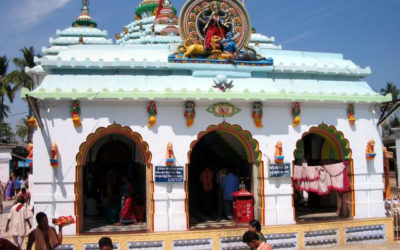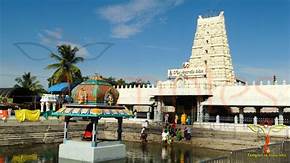The Kali temple of Kalkaji was the earliest known place where Shivratri was celebrated by those who came from the suburbs of Mathura, Kosikalan, Faridabad and Ballabgarh. The first Kali temple, historically speaking, was built by Seth-turned-Raja Kedarnath of Akbar’s court in the 16th Century, though legends say that there was one at the place in primeval times too. Kalkaji temple’s present building was built in 1764 in Shah Alam’s time and a fair is held there every Tuesday. The establishment of the Shiv Sabha in 1910 by the Hindu Mahasabha meant a new focus on Lord Shiva, whose Shivalayas in the Capital were earlier outnumbered by Ram temples. A cursory survey of the Shivalayas in Delhi should be a revelation. The one in Naraina Vihar is said to be about 118 years old but whose history is mixed up with Narainpal, a grandson of the famous Anangpal. In its present form, it was built by Chaudhuri Ram Das Tanwar in Samvat 1941 but in all probability it marks the site of Narainpal’s temple constructed in the 12th Century. The most famous Shivalaya in Old Delhi is the Gauri Shankar Mandir of Gangadhar, a Maratha soldier of the British army in the 18th Century. It was then known as Shivalaya Apa Gangadhar.
INTACH lists the Shivalayas of Delhi as follows: Shivalaya near the exit gate of New Delhi Railway Station built in the late 19th Century. Then the many shivalayas of Katra Nil, Chandni Chowk like Shivalaya Kunnji Maharaj and others. Manakchand’s Shivalaya was built in 1845; Bada Shivalaya in 1816 (Akbar Shah’s reign); Shivalaya Ghanteshwar Mahadev in 1850, Bahadur Shah Zafar’s time, so also Dhummimal’s Shivalaya and Pandit Hari Ramji-ka-Shivalaya. The Mahadev Mandir opposite Old Delhi Station, is of the late 19th Century. The Shivalaya in Kanjhaola, the Shiva Mandir in Nizamuddin, and the Shivalaya in Jal Vihar, Lajpat Nagar are all of the late Mughal period.
Sikh shrines
Only four Sikh shrines are listed officially by INTACH but according to the Delhi Sikh Gurudwara Management Committee there are at least 10 of them. Among these Dukh Bhurjan Gurudwara is housed in a building dating back to Tughlaq times – more than 200 years before Sikhism became an established religion. The paradox lies in the fact that Dukh Bhurjan, the monument to one woebegone, was earlier known as Mitthas tomb and converted into a gurudwara in later times. The building has a Tughlaq period canopy, crowned with a finial. Its screens and open spaces have been walled up to make it look like a house of prayer. A similar fate befell the tomb of Itbari Khan Khwajasarai, near Akbar’s mausoleum at Sikandra. Linked to a huge pond built by Sikandar Lodhi, it subsequently came to be known as Guru-ka-Tal after Guru Tegh Bahadur camped there.
Historically speaking, Nanak Piyao Gurudwara near Rana Partap Bagh, G.T. Road, should be considered the oldest gurudwara since the founder of the faith, Guru Nanak, camped there in a garden whose owner built a shrine in his memory called Pau Sahib. The name Nanak Piyao was appended much later. Majnu-ka-Tila gurudwara, is also of Guru Nanak’s time. Sis Ganj Gurudwara in Chandni Chowk, marks the site of the Kotwali where Guru Tegh Bahadur was imprisoned by Aurangzeb and later executed and Rakabganj Gurudwara the site where his headless body was cremated. Gurudwara Bangla Sahib was originally a palace of Sawai Raja Jai Singh of Amber. He later handed over the bungalow to the Sikh community which had petitioned him for it, and thus it came to be known as Gurudwara Bangla Sahib.
There are two shrines dedicated to the last Guru, Gobind Singh, Gurudwara Moti Bagh and Gurudwara Damdama Sahib. His two consorts, Mata Sundari and Mata Sahib Devi have a gurudwara to commemorate them in Mata Sundari Road. Their samadhis in Bala Sahib gurudwara are also revered shrines as is the gurudwara of Banda Bahadur in Mehrauli. Banda was executed, along with his son during Farrukhsiyar’s reign . As for Lal Shabaz Qalandar, Sufis in Delhi too recognise his immense contribution to Sufism in undivided India when going to his shrine was part of the ziyarat of pilgrims bound for Ajmer and Sindh. Runa now plump and based in Bangladesh must be sorely aggrieved at the tragic happening.



0 Comments